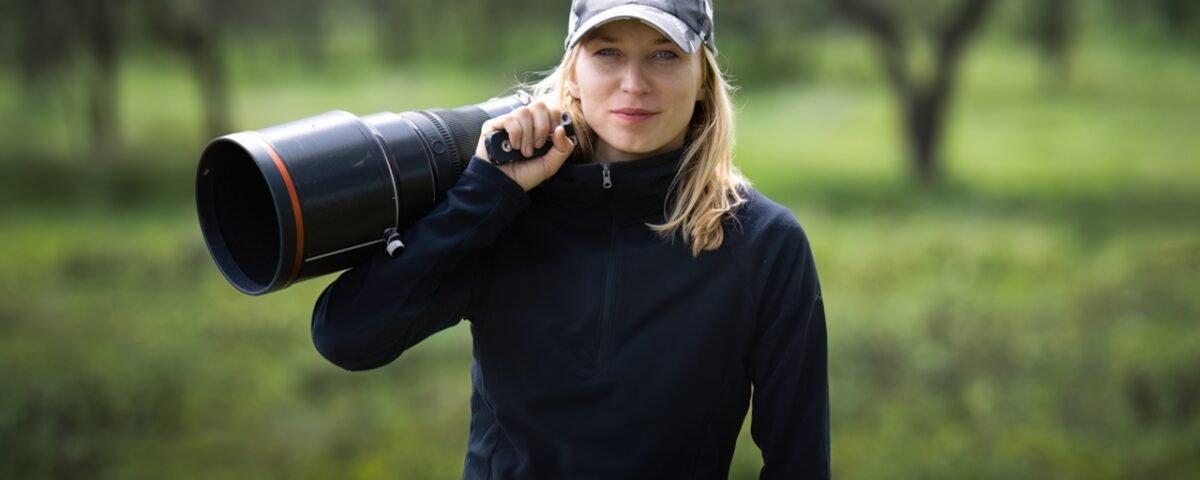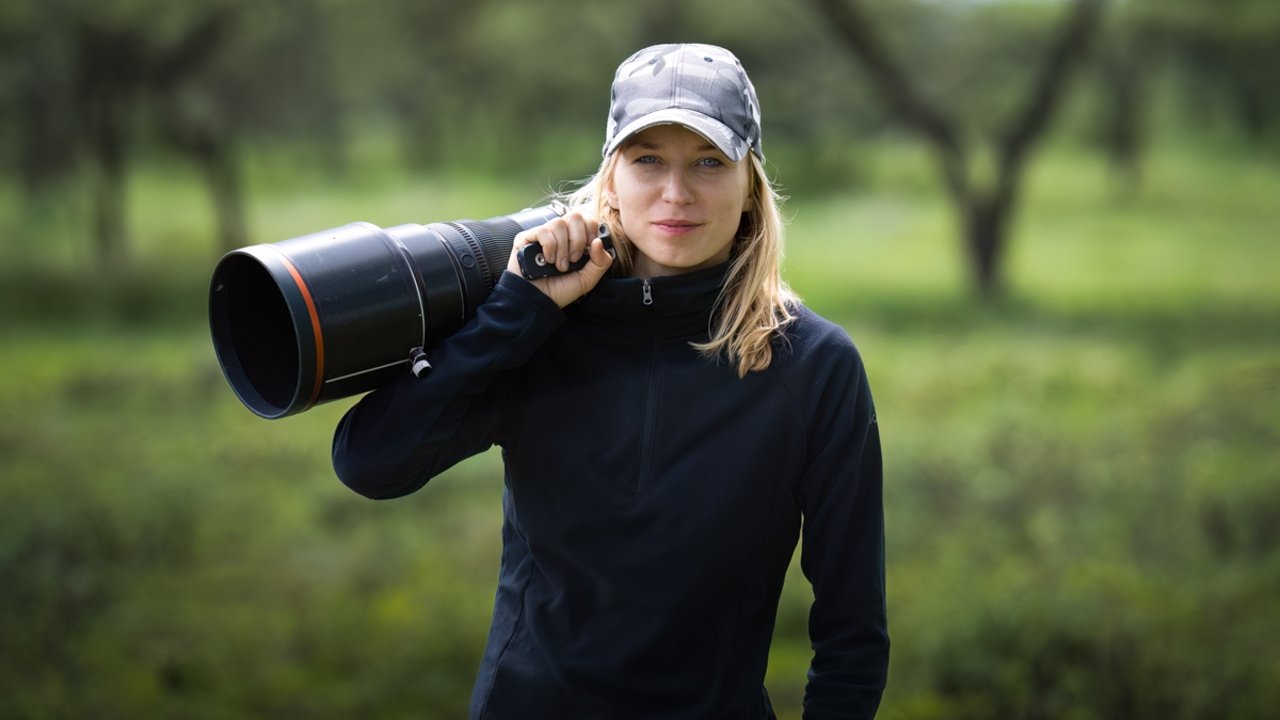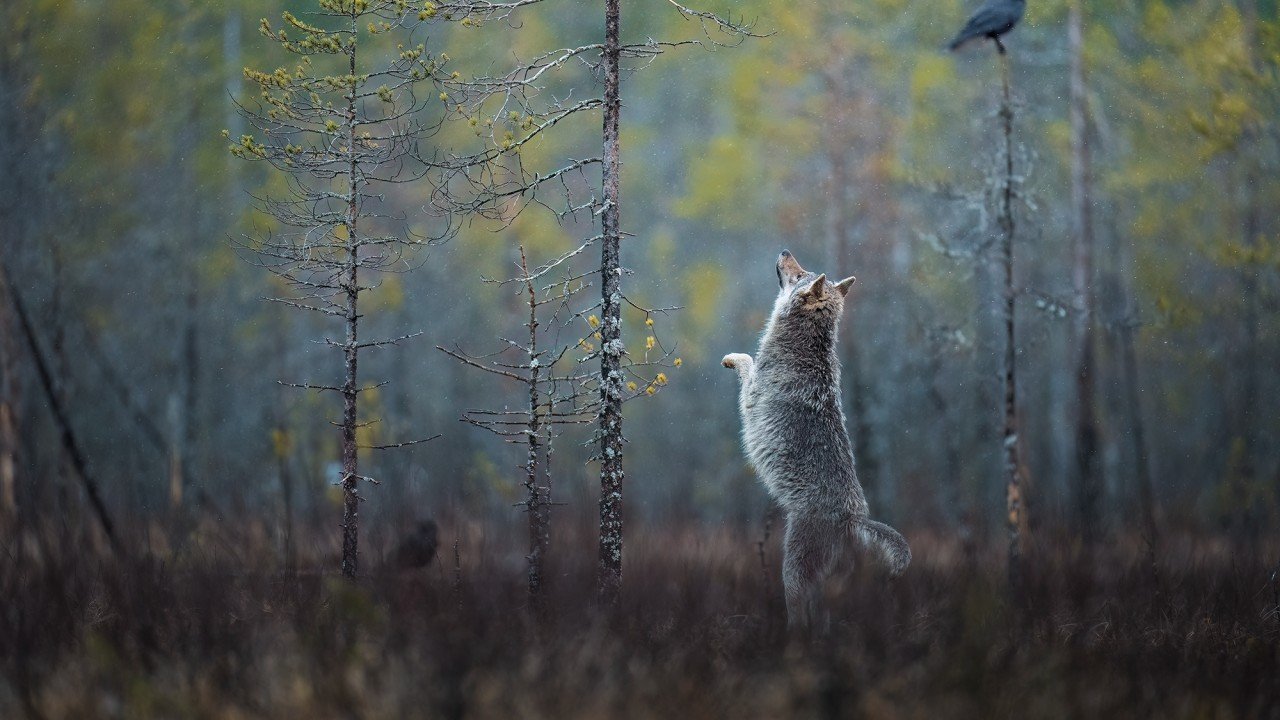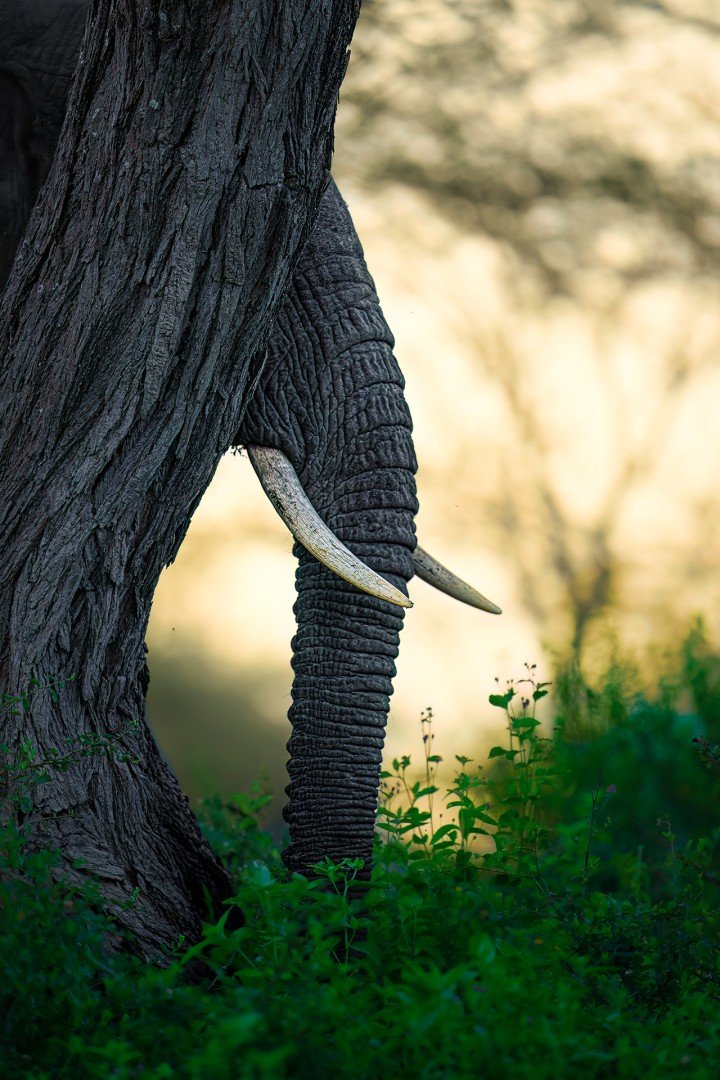
Haochen He, Both a Photographer & Architect Balances the Stories in Photography
September 26, 2025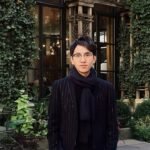
The Intersection of People & Place: Insights from Zehua Zhang
October 21, 2025Alexandra Surkova
Trained in journalism and diplomacy, Alexandra Surkova never expected to trade suits for camouflage, but a chance gift sparked her transformation into a wildlife photographer. Today, she pursues the challenge of capturing not just images but the raw presence of the animals she encounters.
Thank you so much! Honestly, I never thought I’d end up as a wildlife photographer. I studied journalism and diplomacy—so technically I was supposed to wear suits, not camouflage. But life had other plans.
What inspired me? A very unexpected gift. A stranger who followed me on Instagram liked the street photos I was taking with my very first camera, and instead of sending a postcard, he sent me a Sony 200–600mm lens. That was the turning point.
My first wildlife shots were terrible—I’m pretty sure even the squirrels looked embarrassed for me. But little by little, I got hooked. What started as “let’s see if I can take a nice picture” turned into “let’s survive +50ºC just in case a lynx might show up or not.”
Since then, the journey has been full of missed shots, unforgettable encounters, and many moments—especially at 4 a.m. when the alarm goes off—when I thought: “Why am I doing this to myself?” But then, the animal appears, you press the shutter, and you remember exactly why.
So yes, it started as curiosity, became an obsession, and now it’s a lifestyle (one that includes permanently muddy shoes and way too many hard drives).
It was early May, and spring had finally reached even the most remote parts of the Finnish taiga. Nature was bursting back to life when suddenly, snow began to fall. Soft flakes started to dance between the trees, and as if the scene wasn’t magical enough, a wolf appeared.
He was playful, chasing ravens through the forest like a pup rediscovering joy. Then, in one surreal moment, he spotted a raven perched high on a branch and leapt toward it—as if he too could fly. The raven didn’t even flinch, but I nearly forgot to breathe as I pressed the shutter.
Winning with this image feels deeply meaningful to me. It’s not just about the photo—it’s about being there, witnessing that fleeting, impossible moment. For me, it’s a reminder of why I chose this path: photography is not only about capturing beauty, but about being present when nature decides to gift you its stories.
I bought my first camera six years ago for street photography. I was obsessed with this idea: if I take just one photo a day, maybe I can reconstruct my entire life. With that obsession, I got my first camera, started shooting and then COVID arrived.
So there I was—a street photographer, without a street. I started travelling through empty countries, turning the camera on myself, and even placing my family in the frame just to keep the photos alive.
And then came that unexpected gift I mentioned before—the lens that completely changed my path. It made me leave behind a 15-year career in journalism and start everything from scratch as a wildlife photographer. Probably the best plot twist my life has ever had.
Wildlife photography. I love it because it’s the only genre where “waiting 10 hours and coming back with nothing” is considered completely normal and somehow, still addictive. And unlike people, animals never complain about how they look in the photo.
But if we’re speaking seriously, every encounter with an animal makes me feel incredibly alive and grateful. To witness such limitless beauty in the wild is a privilege that never loses its magic.
My go-to setup is the Sony A1 II with prime lenses. The 300mm f/2.8 is my favourite because of its incredible balance of sharpness and lightness—after long hours in the field, that makes all the difference. It feels fast, intimate, and almost effortless to carry compared to bigger glass.
That said, I also adore the 600mm for its unparalleled bokeh. It can turn a messy background into pure magic, and sometimes I think the lens has more artistic vision than I do.
Why does this setup work best? Because in wildlife, every fraction of a second matters, and I need equipment that reacts instantly. My favourite feature of the A1 II is its fast autofocus—it lets me work without relying on bursts, capturing the exact moment I want with precision.
What I’d love people to feel is what I felt in the moment I pressed the shutter. I think that’s the most difficult thing in photography—to make an image speak with the same intensity as the living being in front of you.
If my photo can carry even a fraction of the heartbeat, the silence, or the electricity of that encounter, then I know it worked.
With the wolf photo, the biggest challenge was not technical—it was simply being there, waiting, and trusting nature. You can spend days in the forest and see nothing, and then suddenly, magic unfolds in front of you.
That day, the hardest part was staying focused when everything felt surreal: the unexpected snow in May, the wolf playing like a pup, and then that leap toward the raven. My instinct was almost to just watch in awe—but I reminded myself to breathe, stay calm, and press the shutter at the exact moment.
So in a way, the challenge wasn’t capturing the scene—it was not letting the emotion of it overwhelm me before I did.
Africa, for me, is a continent of limitless inspiration. It allows me to experience the full spectrum of emotions in such a short period of time—it’s like being plugged into pure adrenaline.
But right now, what excites me most isn’t just photographing animals as the final goal. It’s being part of conservation projects that can truly help protect this world around us. For me, that feels like the most meaningful way to use photography—to create images that inspire, but also contribute to something bigger than myself.
My message would be: don’t overthink it—just submit. The worst thing that can happen is that nothing changes. The best thing? Your work gets seen, your confidence grows, and sometimes you even surprise yourself.
As for advice, I’d say: don’t try to guess what the judges want. Choose the photos that move you first. If an image still makes your heart race every time you look at it, chances are it has the power to move others, too.
And remember—awards are not just about winning. They’re about learning how to edit your own work, to see your photography from the outside, and to push yourself a little further.
For me personally, the real motivation isn’t winning prizes—it’s the hope that more people might see the beauty around us. We never know who is looking at our images. Sometimes it may touch just one person, but that one person could be the one who changes everything.
And most importantly, have fun, because if you don’t enjoy the journey, no trophy will make it worth it.
For me, editing is just as important as taking the photo—because that’s where your personality, your vision, and your way of telling the story truly appear.
Think of it like food: you don’t go to a restaurant for raw tomatoes, you go for the flavour that a specific chef creates. Photography is the same. It’s not about the raw file, but the finished work—how you saw the scene, how you chose to tell it.
Even if ten photographers stand in front of the same animal, none of the photos will ever be identical. First, because we all see differently. And second, because we all edit differently. That’s the beauty—the magic—of photography.
I believe showing the truth is a revolutionary act.
AI can create perfect images—even scenes that move you—but they will always lack one thing: they never actually happened. A real photo connects you to the cold air, the smell of earth, the silence broken by a roar. It carries the emotion of a fleeting moment that existed only once.
Yes, it’s easier to ask a machine for a snow leopard than to freeze at –30°C and still come home with nothing. But that risk of failure is part of the truth—and what makes the reward unforgettable when it finally happens.
AI can manufacture beauty. But beauty without life doesn’t change the world. The images that do are the ones born of real encounters, real emotions, real stories. In a world where fake often looks more real than authentic, showing reality is the most radical thing we can do. It may be art—but it is not photography.
Alexandra Surkova
Trained in journalism and diplomacy, Alexandra Surkova never expected to trade suits for camouflage, but a chance gift sparked her transformation into a wildlife photographer. Today, she pursues the challenge of capturing not just images but the raw presence of the animals she encounters.
Explore more visual arts Through the Lens of Equidae Freedom: Creating Stories with Martina Prša here.

